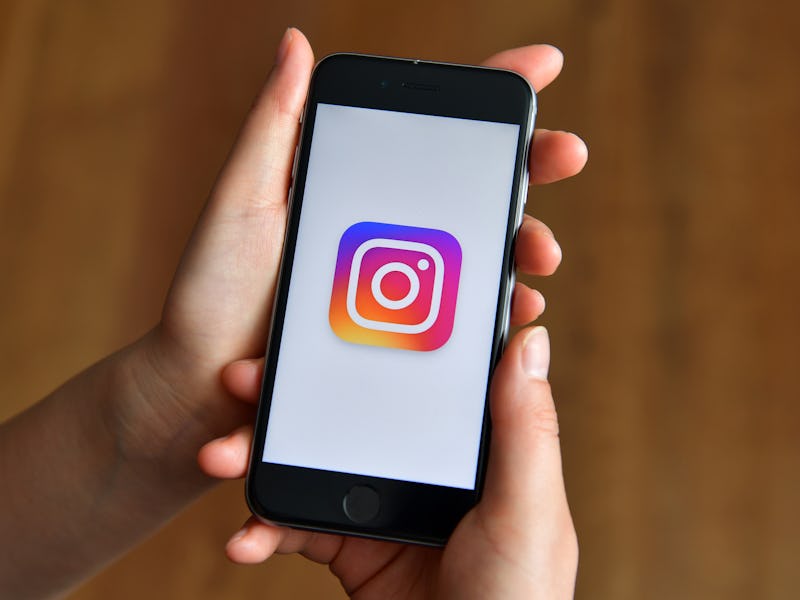What's Up with Instagram's Spam Problem?
Spam is everywhere, but Instagram might have it worst of all.

A few weeks ago, my friend Jerry Iannelli’s family dog died. Like many people who go through the death of a beloved pet, Iannelli posted about it on Instagram, publishing a picture of Kona, a black labradoodle, as she chased him around the front yard as a puppy. Jerry’s picture got 45 likes and some sympathy from his friends, but one comment stood out.
“☀️Keep posting DOPE content!☀️ ” commented an account “theurbanmiami,” a South Florida social promotion website that hypes up events for urban professionals and communities. Confused, Iannelli replied, “This is a post about my mom’s dog dying?” and Urban Miami, apparently under control of a human once again, responded, “Nice picture though, sorry for the loss 🙏”
If you’re on Instagram, you’ve undoubtedly run into spam. On Instagram, it usually comes in two forms — neither of which the Facebook-owned company really likes to talk about.
Social promotion accounts, aspiring photographers, and budding influencers often use algorithm-powered services that automatically post comments and likes on pages geotagged in relevant locations or using flagged hashtags. Thousands, if not millions, of people use “botting” to drive engagement to their pages and send out likes and comments, like the cookie-cutter compliment about Iannelli’s dead dog (The Urban Miami didn’t respond when I emailed them to ask which bot program they use).
But those accounts are usually tied to a real person or business, unlike the millions of spambots posing as models, escorts, or “public figures” to entice users to click the shortened link to their sketchy website.
For regular users, the spambots are a mild annoyance, but the site’s larger problem is an algorithm that incentivizes engagement on a robotic scale, making “botting” a common practice for up and coming accounts.
Dope.
“I get a constant influx of following/ unfollowing, which is probably due mostly to bot/ spam followers,” Devin Nelson, a friend of mine who’s a portrait photographer in L.A. says, referring to the fake accounts running a simple phishing scam. But within the first two hours of posting something, he says he’ll get a deluge of “super generic comments” from the power users’ running engagement scripts. “I don’t really mind spam comments because it boosts my engagement and makes me more visible,” Nelson says. “But I mind the fact that that spam comments exist in general, because the poor saps like me that don’t use them are at a disadvantage for being ‘genuine.’”
Nice! So Pretty! Great stuff, I've just started growing my own photography page! Check it out (: Dig it, nice post.
In other words, Instagram has an engagement problem. The posts with the most comments, the accounts with the most interactions, are more likely to rise to the top of the site’s new algorithm. When the site switched from a chronological feed (posts displayed in the order they were published) to an algorithmic one, it put a massive crunch on creators to make sure their content rose to the top of the feed.
It didn’t quash cheap influencer/ meme spam accounts, but Nelson guesses that as much as 35 percent of “legit users” — other photographers, artists, and designers — turned to bots to make sure they were getting the most out of the algorithm. Instagram did not immediately respond to a question about the number of its users using bots, so there’s no real way to verify that figure.
Instagram is Cracking Down on Spam Accounts
It’s possible, however, that Instagram is quietly starting to crack down. On April 20, the company quietly shut down Instagress, one of the most popular botting services.
Instagress noted that “Insta” is a registered trademark. The service did not say if that was why it was closed down, and representatives for Instagram, also wouldn’t confirm why the service was shut down. And it’s not like Instagress users lack alternatives: apps like Firing Table, TurboGram, GrowthPup and countless others offer similar scripts and engagement services. (GrowthPup.)
As it stands, there’s really no incentive to not use a botting service if Instagram is in any way part of your business plan or brand. “Changing the algorithm could be a solution,” Nelson says, because under the new system “there is a lot more incentive to use shady means to get your post into the explore page.”
It’s also possible that aside from trademark concerns, there’s really no incentive for Instagram to fix the system.
“Authentic Interactions” Only
The company maintains that it wants to highlight authentic interactions, and has several teams dedicated to fighting fraudulent activity on the site. Its terms of service forbid spam and the use of third party scripts or bots, but enforcement of those prohibitions is unclear.
An Instagram spokesperson tells Inverse that it supports “authentic interactions” on the site and doesn’t support programs that exchange likes and follows. But part of the problem likes and followers are Instagram’s most obvious metric for success and engagement, and one users profiles are displayed as a mostly anonymous number. Higher numbers are better for everybody, and if it’s just bots mashing the heart button and the content is dope, who cares?
A couple days after we first spoke, Jerry hit me up again, DMing me a screenshot. “In case you’re still writing: This high-end photobooth company also just liked my post about my dog dying.” On any other photo, I’m sure Jerry would have appreciated the 45 likes he received, even the ones from “Valentine Images” and “The Urban Miami.” But in the case of social media sincerity, Instagram’s bot-friendly algorithm makes moving on from a dead dog even less dope.